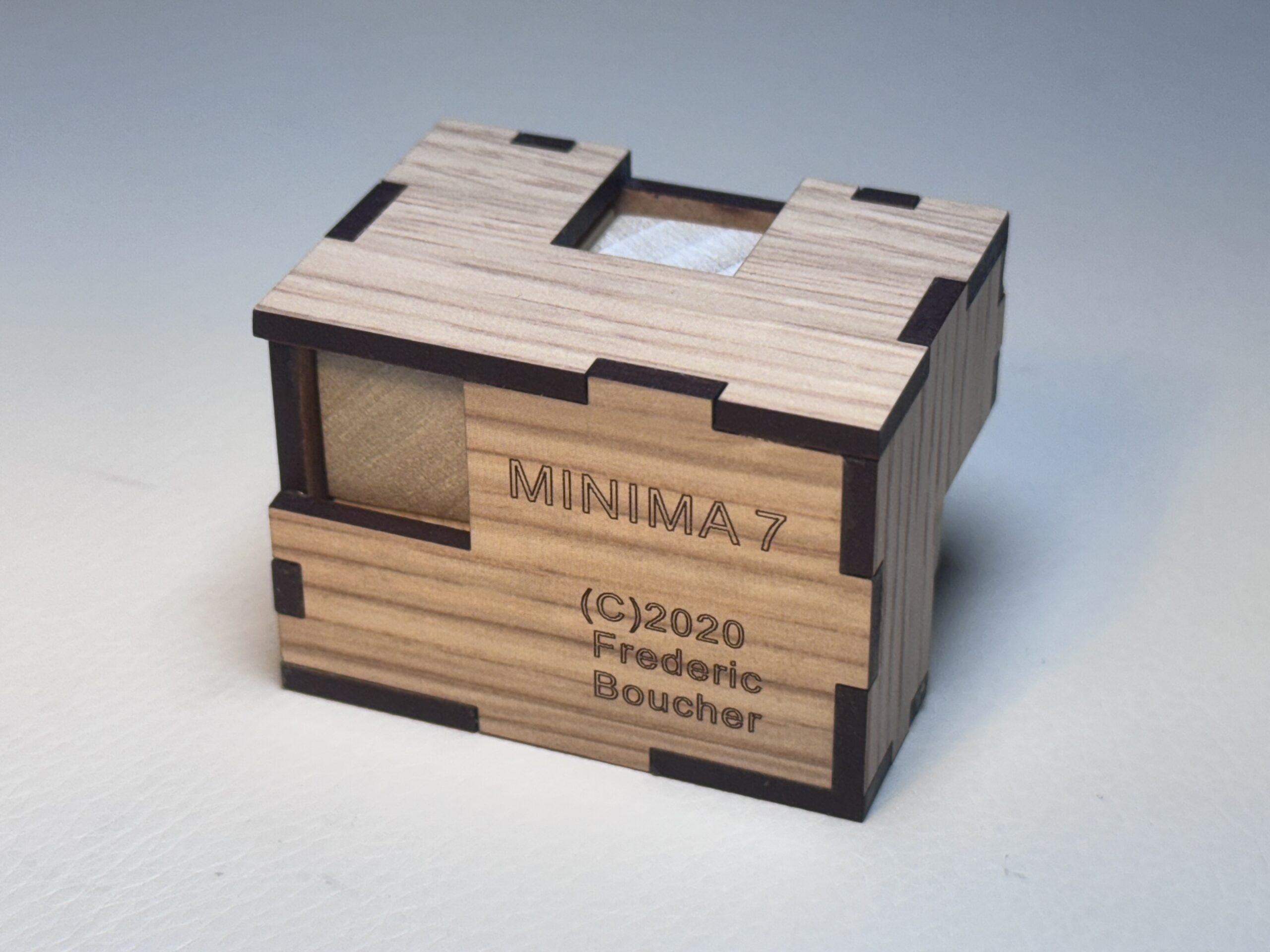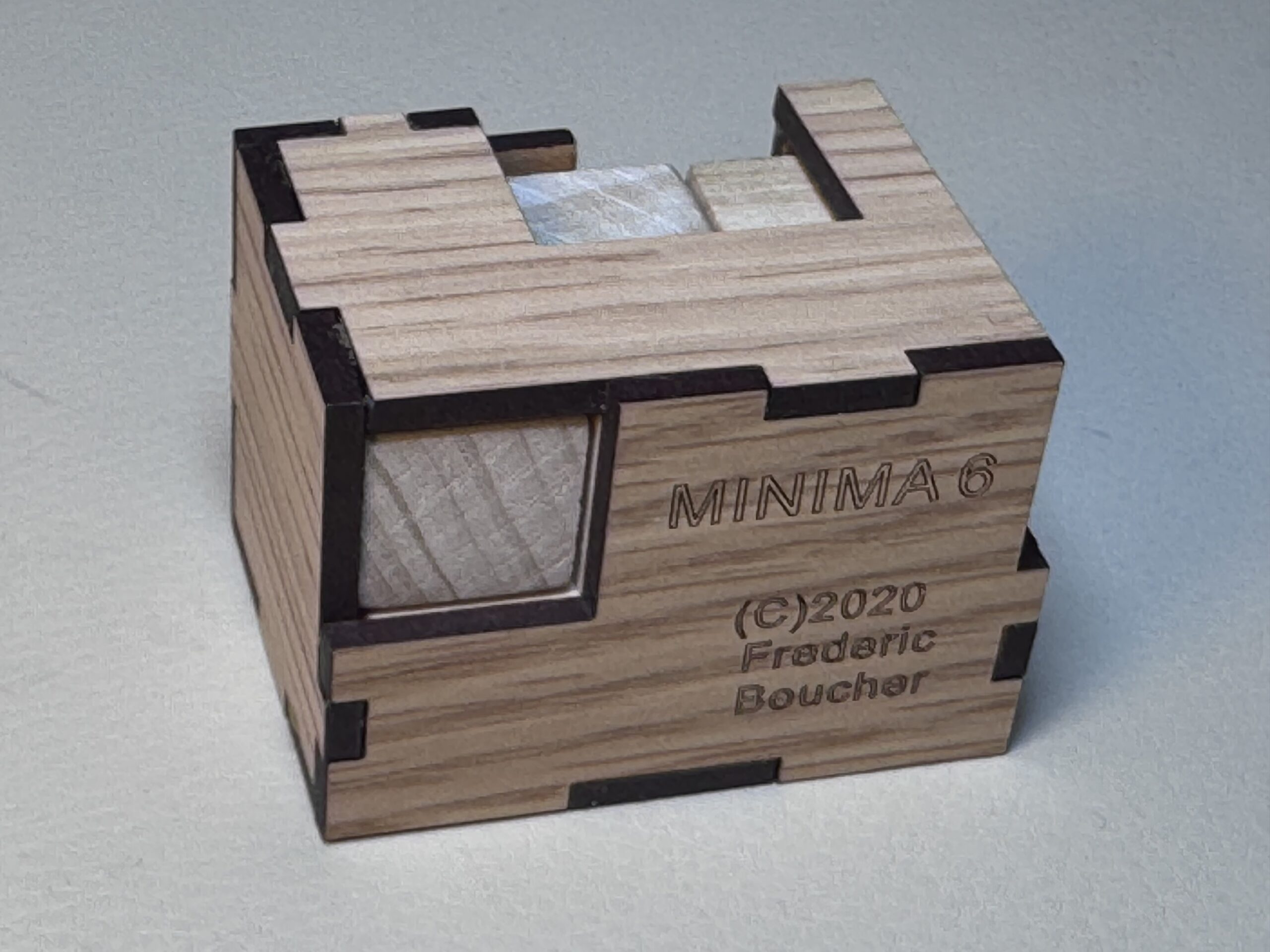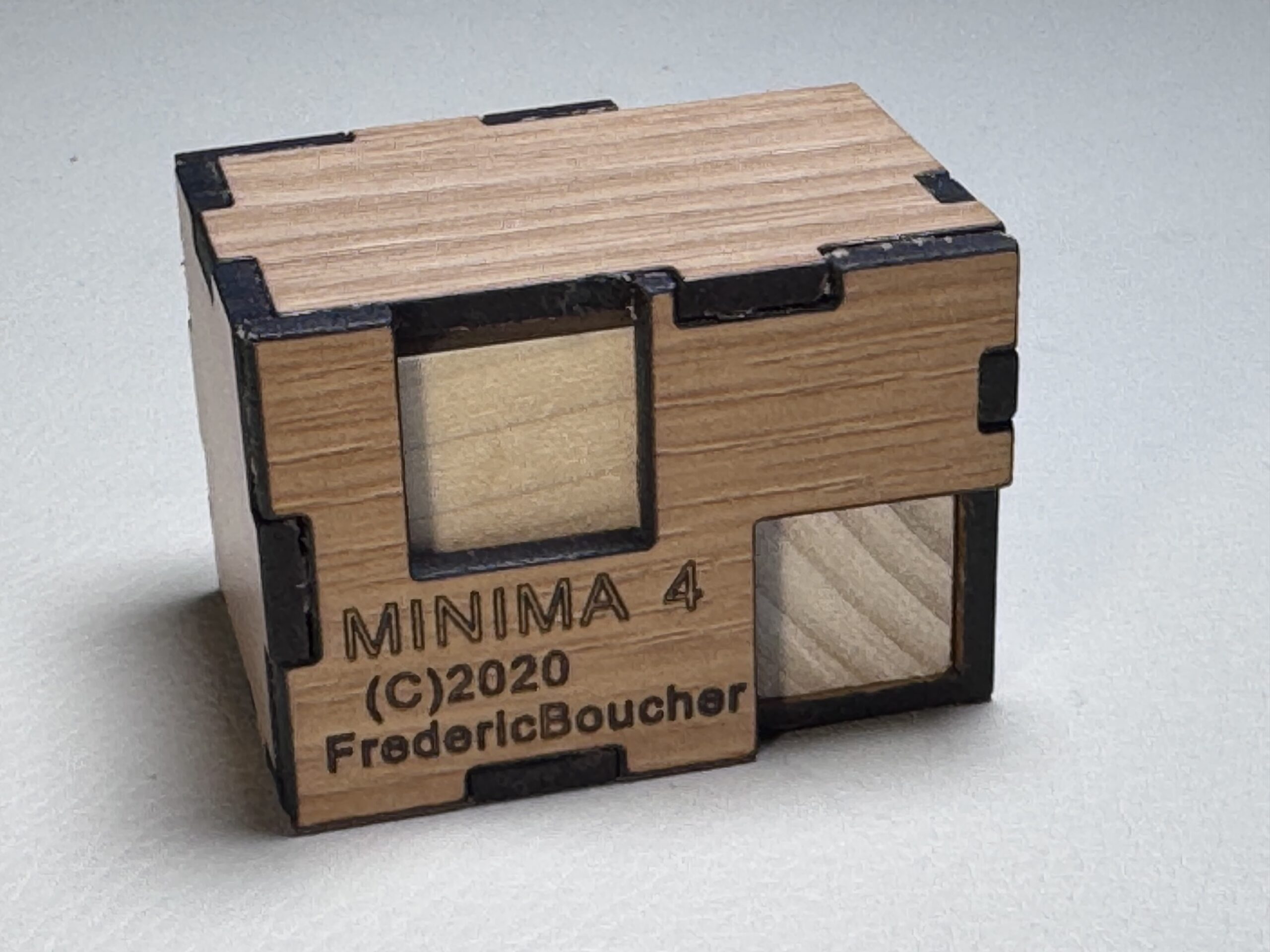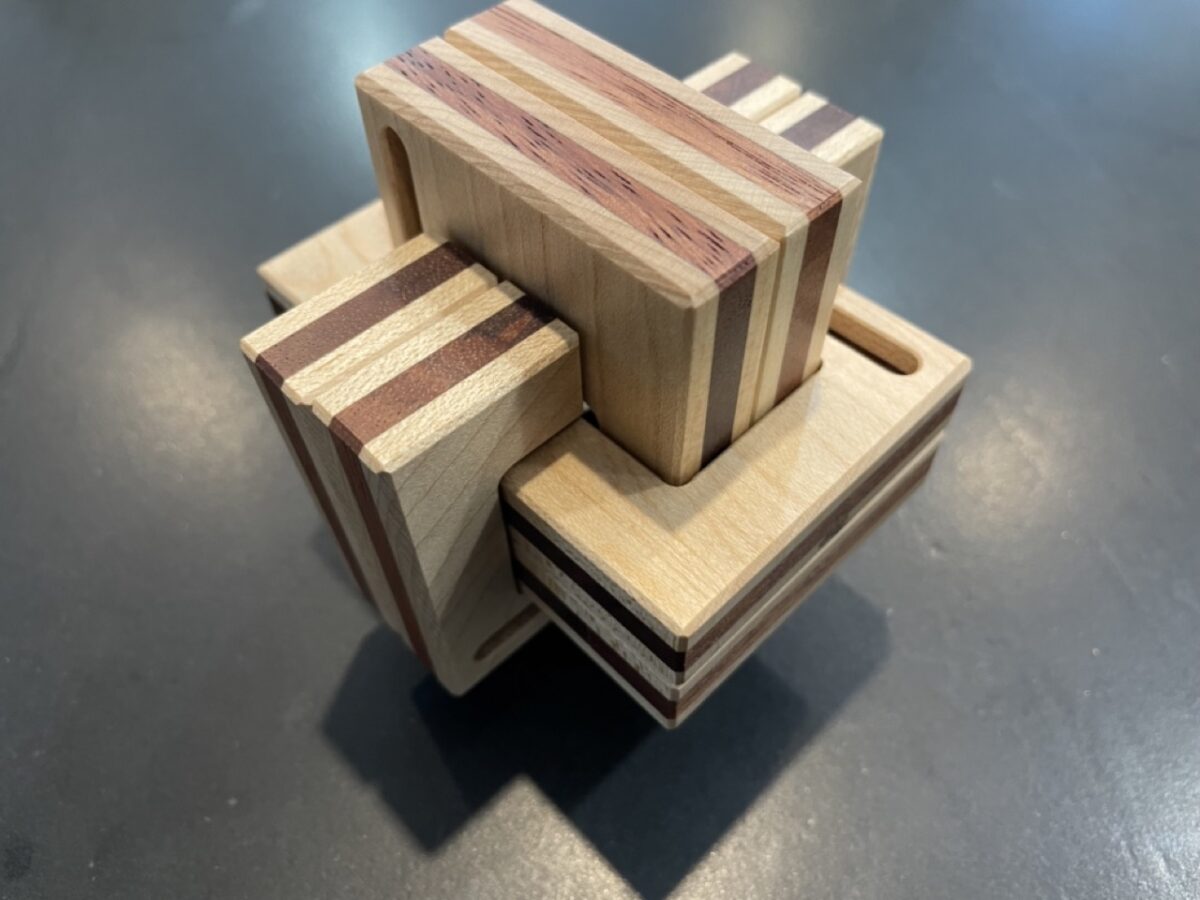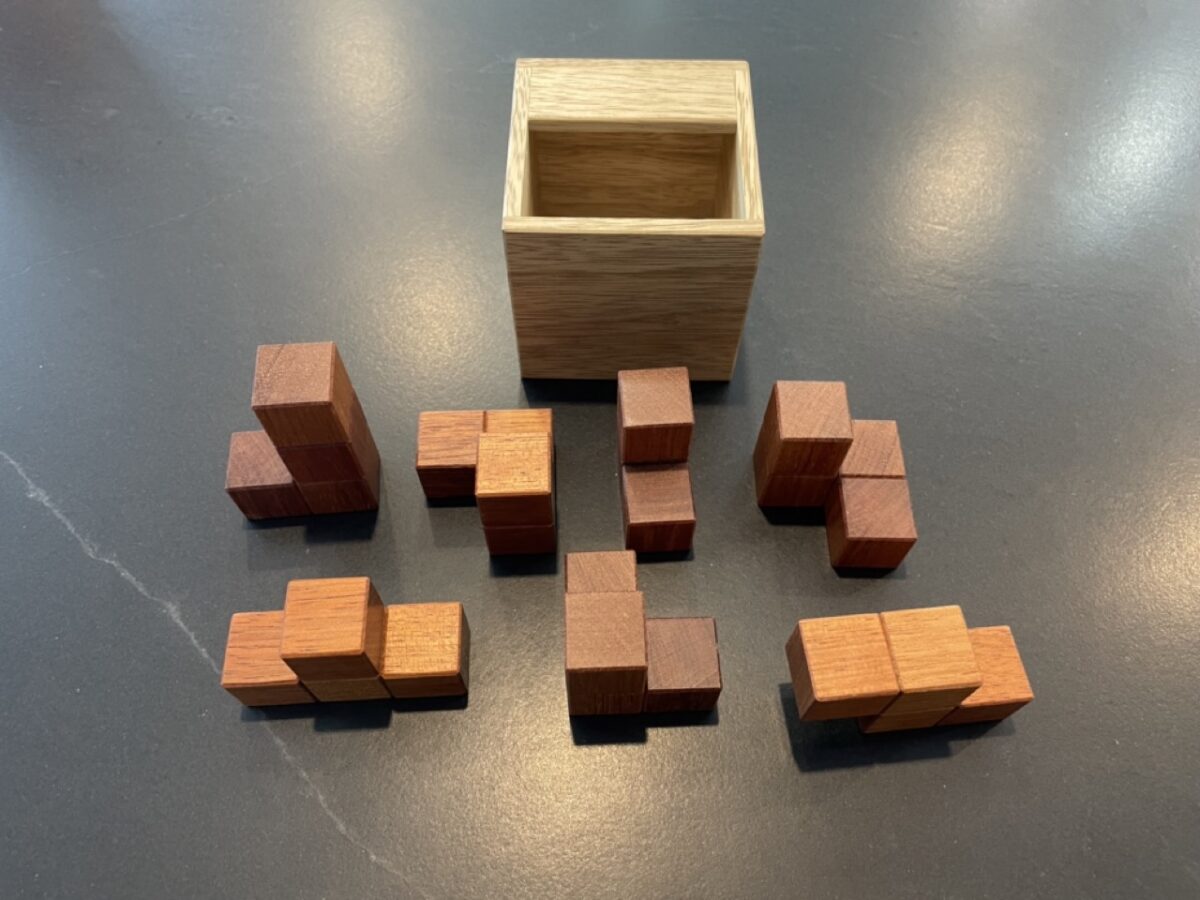Wood
-
Read More: Minima 8 – Frederick BoucherMinima 8 is likely the trickiest of the bunch. There’s a particular move that stumped…
-
Read More: Minima 7 – Frederick BoucherMinima 7 is a fun puzzle and if you’ve completed the first 6, then this…
-
Read More: Minima 6 – Frederic BoucherMinima 6 is super fun! This one plays almost like a fidget toy, with a…
-
Read More: Minima 5 – Frederick BoucherHere we go with another Minima Puzzle. Minima 5 has 4 pieces to pack into…
-
Read More: Minima 4 – Frederic BoucherThe difficulty ramps up a bit with this one. I spent more time than I’d…
-
Read More: Minima 3 – Frederic BoucherWith Minima 3, things start to get a little more complex. There are only 3…
-
Read More: Minima 2 – Frederic BoucherMinima 2 is pretty straightforward but it is still a tricky solve. The pieces occupy…
-
Read More: Minima 1 – Frederic BoucherAhhh, the Minima Series. These puzzles seem to have taken the puzzle community by storm.…
-
Read More: Grooved 6 Board Burr #5 – Junichi YananoseIt was about 2 years ago (holy crap where does the time go?) When I…
-
Read More: SOMA-FLOP – Dr. Volker LatussekI love me some DVL puzzles. Some of the best moments I’ve had puzzling were…

